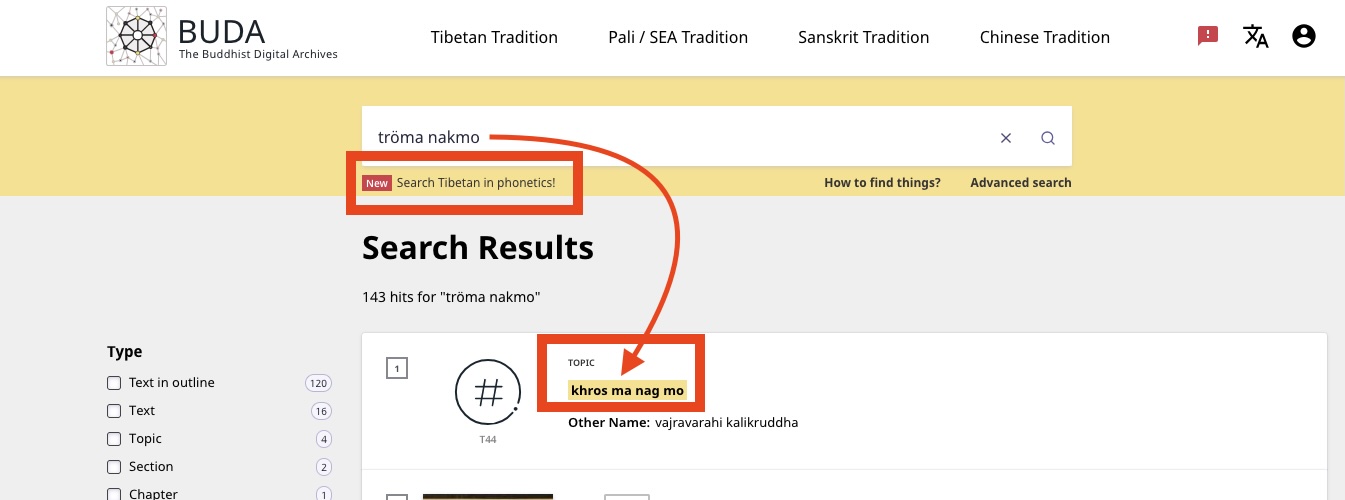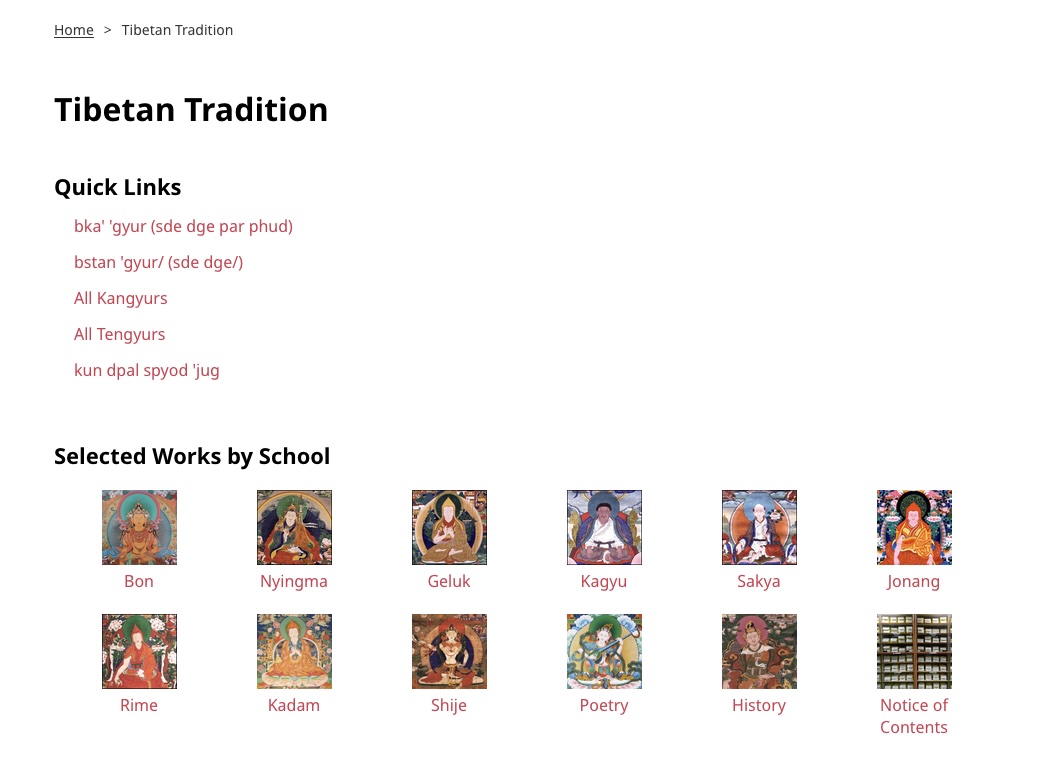A Personal Reflection on Accessing Tibetan Buddhist Texts Digitally on BUDA
Why This Reflection?
After four blogposts exploring the history, mission, and technological foundation of the Buddhist Digital Resource Center (BDRC) and its platform BUDA, I want to end this series on a more personal note. My previous entries aimed to present BDRC’s work in a clear and objective way. This final post, by contrast, is written from my own perspective as a potential user of BUDA. What does it actually feel like to use this platform? What are its strengths, its challenges, and its possibilities for someone like me?
This reflection is shaped by my own position, which sits at a unique intersection, I am a student of Central Asian (Tibetan) Studies as well as Digital Humanities. I am digitally interested and already familiar with some Tibetan Buddhist literature. At the same time, I am a Swiss-born Tibetan, fluent in colloquial Tibetan, with basic reading skills. English is the more natural language for me when doing research. And beyond all that, I am also a practicing Buddhist, which means my interest in BUDA is both scholarly and personal. These overlapping identities shape my experience of the platform in ways that are sometimes empowering, sometimes overwhelming.
First Impressions
Opening BUDA for the first time, I felt genuinely impressed. The interface is clean, the speed is excellent, and - importantly - it is openly accessible. There is no need to register or log in to start exploring. This reflects BDRC’s values of openness and inclusivity.
At the same time, the simplicity of the design masks the platform’s underlying complexity. BUDA is not just a library of scanned texts. It is
- a sophisticated metadata system
- a digital preservation platform, and
- a research tool all at once. It took me some time to grasp how everything is structured and how best to search for the materials I was looking for.
Between Language, Practice, and Research
My experience of using BUDA is shaped by the intersection of my roles as a practitioner and a researcher, as well as by my linguistic situation.
As someone raised in Switzerland in a Tibetan family, I can speak and understand Tibetan fluently, but my ability to read texts is still a work in progress. I can read Tibetan, but not yet well enough to fully engage with most canonical works. This makes the English interface essential for me.
However, one issue I encountered is that searching for texts often requires inputting keywords in Tibetan, and even more specifically in Wylie transliteration. Typing in Tibetan script is already a challenge for me, and Wylie requires a precise knowledge of how Tibetan syllables are spelled - which can be difficult if your literacy is still developing.
BUDA has recently introduced a feature called “Tibetan in phonetics”, which is a promising step toward more accessible searching. If the platform could one day fully support phonetic Romanized Tibetan (i.e., how we pronounce words), that would be a real breakthrough for users like me. This would be especially valuable given that typing in Wylie requires perfect spelling knowledge.
However, using phonetic Tibetan also poses challenges, since there is currently no widely accepted standard for how Tibetan sounds should be rendered in Roman letters. Despite this, even a flexible or adaptive phonetic search option would significantly lower the barrier for users like me and make BUDA more accessible to a broader audience.


As a Buddhist practitioner, I would begin by going directly to the “Tibetan Tradition” section on BUDA’s homepage. From there, I usually select a specific lineage, for example, the Kagyu school.

Because I already have some background knowledge of key figures and works in this tradition, I can navigate the material with more confidence. I know what to look for and can recognize texts that interest me. But I wonder how someone like a fellow Swiss-born Tibetan, with less experience in Buddhist studies, might find their way on the platform. Without some basic context, BUDA’s structure and terminology could be a bit challenging at first.
Strengths and Limitations
There is much to appreciate in BUDA. The quality of digital scans is excellent, the metadata is detailed and carefully structured, and the inclusion of traditional classifications helps situate texts within the wider Tibetan literary landscape. Being able to explore entire collections organized by tradition, author, or even geographic origin is remarkable. As a student and practitioner, this feels like a gift.
And yet, there are limits to what I can currently do. While I have a basic understanding of how linked open data works and why metadata is important, I am not yet technically skilled enough to use BUDA’s more advanced research tools such as SPARQL queries or the API. I see the potential, but it lies just beyond my current abilities.
At the same time, I believe BUDA could become even more accessible if BDRC provided additional support materials, especially short tutorials or video guides that walk users through the most important search queries step by step. While I am aware that BDRC already organizes webinars and classes (such as the live demo and training session for BUDA 2.0 announced here), I think it would be incredibly helpful to make a shorter recording of such sessions available afterward.
Final Thoughts: A Platform That Inspires Growth
BUDA is more than just a digital text repository. It’s a platform that encourages learning and growth. It has shown me both what I know and what I still want to explore, helping me experience Tibetan Buddhist heritage in a more tangible way while guiding me toward deeper knowledge.
While I’m excited by the possibilities BUDA offers, I’m also aware of my own linguistic and technical limits that sometimes make the platform feel challenging. For me, BUDA is a bridge between cultural heritage and technology, between past and future, and between personal belief and academic study. I hope it continues to grow in ways that support scholars, Tibetans, digital learners, and spiritual seekers alike.
This brings my five-part blog series on the digitization of Tibetan Buddhist texts to a close.
Thank you for reading!
Read all of the blog posts here:
- Digitizing the Dharma – Introducing BDRC and the Digital Preservation of Tibetan Buddhist Texts
- Buddhist Digital Archives (BUDA) in Focus - Part 1
- Buddhist Digital Archives (BUDA) in Focus - Part 2
- Innovation Guided by Cultural Sensitivity – BDRC’s Model of Responsible Digital Stewardship
- A Personal Reflection on Accessing Tibetan Buddhist Texts Digitally on BUDA (this post)
Enjoy Reading This Article?
Here are some more articles you might like to read next: